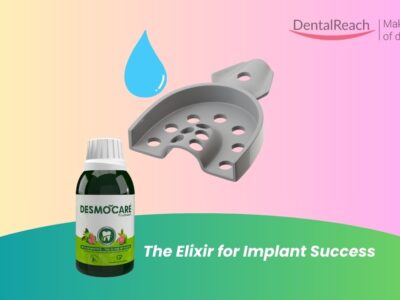Dental Implants in Osteoporotic Patients: A Comprehensive Review
A recent systematic review explores the longevity and success of dental implants in osteoporotic patients.
As the population ages, dental professionals are increasingly encountering patients with systemic diseases such as osteoporosis. The condition, which is characterized by decreased bone density and increased bone fragility, affects an estimated 300 million people worldwide, primarily women over 50 years old.
The dental implant, an osseointegrated structure, has a close relationship with the bone. Osteoporosis, which deteriorates bone quality, could potentially impact the osseointegration process and consequently affect the survival rate and maintenance of the bone around the dental implant.
The Study: Materials and Methods
A systematic review with meta-analysis was published in Clinical Oral Investigation in June 2023. The authors compared the survival rate of dental implants and marginal bone loss among patients with and without osteoporosis.
The review, registered in PROSPERO (CRD42022356377), utilized five databases: Medline/PubMed, Web of Science, Scopus, Embase, and ProQuest to search for articles up to July 2022. Additional searches were conducted on ClinicalTrials.gov and within the reference lists of included studies.
The eligibility criteria included observational studies that directly compared patients with and without osteoporosis. The studies also had to have a minimum follow-up of 1 year, at least 10 implants placed in each group, and data analysis based on implant level without any limitations on period or language of publication.
The meta-analysis was conducted using the RevMan 5.4 program, and risk of bias analysis of included studies was performed using the Newcastle-Ottawa Scale (NOS).
Key Findings
Twelve studies, involving a total of 1132 patients aged between 54 and 76.6 years, met the eligibility criteria. The majority of the patients were women (73.6%), with a total of 3505 implants evaluated – 983 in patients with osteoporosis and 2522 in patients without osteoporosis.
The meta-analysis revealed no significant difference in implant survival rates between patients with and without osteoporosis. However, there was significant bone loss around dental implants placed in patients with osteoporosis.
Despite the minimal risk of bias found in the included studies, the certainty of evidence was rated as exceptionally low and low for implant survival rates and bone loss, respectively.
Conclusions and Implications
Based on the review, dental implants appear to be a predictable treatment option for the rehabilitation of patients with osteoporosis. However, these patients may be prone to increased bone loss, requiring diligent professional clinical care to ensure peri-implant bone stability.
The full review, titled “Do dental implants placed in patients with osteoporosis have higher risks of failure and marginal bone loss compared to those in healthy patients? A systematic review with meta-analysis,” provides more details on these findings.




















Comments